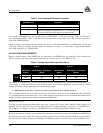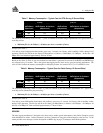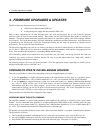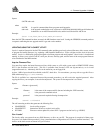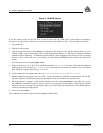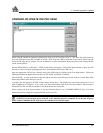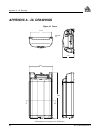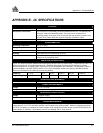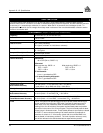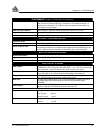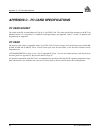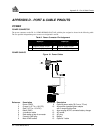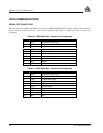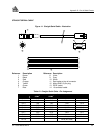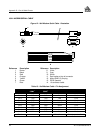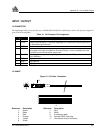
Appendix B – DL Specifications
38 DL™ User Manual Rev 3
REAL-TIME CLOCK
A real-time internal clock allows the DL to go into low-power “sleep mode” between scheduled data-collection
sessions. When the DL is turned on, this clock is initialized using the GPS time reference, and will indefinitely maintain
an accuracy of +
1 second and a resolution of 1 second. When the DL is turned off, the clock begins to drift. To
compensate for this drift, the DL emerges from sleep mode in advance of the next scheduled data-collection session
in order to re-initialize itself.
PERFORMANCE (Subject To GPS System Characteristics)
Frequency
1575.42 MHz (L1) & 1227.60 MHz (L2)
Codes tracked
C/A & P codes
Channels
12 L1/L2 channel pairs, or 12 L1-only (depending on model)
Time to First Fix
100 s (95% probability)
70 s typical (cold start: no initial time or almanac)
Re-acquisition
L1: 3 s typical
L2: 10 s typical
Computed Data Update Rate
5 solutions per second
Measured Data Update Rate
10 data records per second
Position Accuracy
Stand-alone:
40 m CEP (SA on, GDOP < 2)
Differential:
Without choke ring, GDOP < 4 With choke ring, GDOP < 4
CEP < 1.25 m CEP < 0.75 m
SEP < 1.85 m SEP < 1.00 m
RT-2 differential:
2 cm ± 1 ppm baseline CEP
L1/L2 post-processing differential:
2 cm ± 1 ppm baseline CEP
Position Latency
175 ms
Pseudorange Code
Measurement Accuracy
C/A code phase = 10 cm RMS with C/N
o
> 42.0 dB-Hz
P code phase = 40 cm RMS with C/N
o
> 36.0 dB-Hz
Velocity Accuracy
0.03 m/s nominal (differential); 0.20 m/s nominal (single point)
Single Channel Carrier Phase
Measurement Accuracy
L1 carrier phase = 3 mm RMS, C/N
o
> 42.0 dB-Hz
L2 carrier phase = 5 mm RMS, C/N
o
> 36.0 dB-Hz
Differential Channel Carrier
Phase Measurement Accuracy
L1 carrier phase = 0.75 mm RMS, 1 s smoothed, C/N
o
> 42.0 dB-Hz
L2 carrier phase = 4.0 mm RMS, 1 s smoothed, C/N
o
> 36.0 dB-Hz
RT-20
The RT-20 system uses pseudorange and carrier-phase double differencing to
provide nominal 20-cm accuracy (CEP) after 5 minutes of continuous lock (in
static mode, on a 100 m baseline). After an additional period of continuous
tracking (from 10 to 20 minutes), the system reaches steady state and position
accuracies in the order of 3 to 4 cm are typical. The time to steady state is about
3 times longer in kinematic mode. These double-difference accuracies are based
on PDOP < 2 and continuous tracking of at least 5 satellites (6 preferred) at
elevations of at least 11.5°. All accuracy values refer to horizontal RMS error,
and are based on low-latency positions. The level of position accuracy at any
time will be reflected in the standard deviations output with the position.



